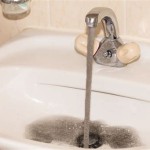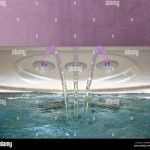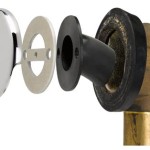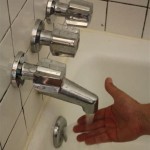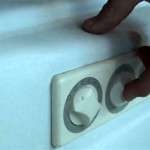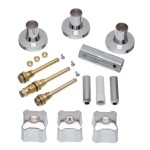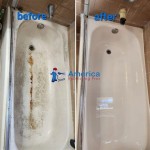Understanding Sealant for Bathtub Spout Diverter Valve Replacement Kits
Bathtub spout diverter valves are crucial components of a functional bathtub system, facilitating the redirection of water flow between the bathtub spout and the showerhead. Over time, these valves can degrade due to mineral buildup, corrosion, or wear and tear, necessitating replacement. A critical, often overlooked, aspect of diverter valve replacement is the proper application of sealant. The sealant's role is to create a watertight seal between the new diverter valve assembly and the surrounding plumbing connections, preventing leaks that can lead to water damage, mold growth, and increased water bills. This article provides a comprehensive overview of sealant use in bathtub spout diverter valve replacement kits, covering types of sealants, application techniques, and best practices.
The importance of a watertight seal in plumbing systems cannot be overstated. Even small leaks, if left unaddressed, can cause significant and costly damage. Water seeping into walls and floors can compromise structural integrity, foster mold and mildew growth, and attract pests. Furthermore, continuous water loss can result in higher utility bills and wasted resources. Therefore, selecting and applying the appropriate sealant during a diverter valve replacement is essential to ensure a durable and reliable repair.
Many bathtub spout diverter valve replacement kits include a pre-selected sealant, often a type of plumber's tape or a small tube of sealant compound. However, understanding the alternative options and the specific requirements of the plumbing system allows for a more informed decision regarding sealant choice. This knowledge empowers the user to ensure a long-lasting and effective repair that minimizes the risk of future leakage.
Types of Sealants Used in Bathtub Spout Diverter Valve Replacement
Several types of sealants are commonly employed in plumbing applications, each possessing unique properties and suitable for different scenarios. When replacing a bathtub spout diverter valve, understanding the characteristics of these sealants is crucial for selecting the optimal product for the task.
Plumber's Tape (PTFE Tape or Teflon Tape): Plumber's tape, also known as PTFE (polytetrafluoroethylene) tape or Teflon tape, is a non-adhesive tape widely used to seal pipe threads. It works by creating a thin, flexible barrier that fills the microscopic gaps between the threads, preventing water from seeping through. To apply plumber's tape, wrap it clockwise around the male threads of the pipe, overlapping each layer slightly. Typically, two to three wraps are sufficient. Plumber's tape is relatively inexpensive, easy to apply, and resistant to a wide range of chemicals and temperatures. However, it's primarily effective for threaded connections and may not be suitable for sealing larger gaps or irregular surfaces.
Pipe Dope (Thread Sealant Compound): Pipe dope, also known as thread sealant compound, is a paste-like substance designed to create a watertight seal on threaded pipe connections. It typically consists of a mixture of lubricating oils, fillers, and solvents. Pipe dope is applied to the male threads of the pipe before connecting it to the female fitting. It fills the gaps between the threads, providing a more robust seal than plumber's tape alone. Pipe dope is available in various formulations, including those specifically designed for use with potable water systems. When selecting pipe dope, ensure it is compatible with the pipe material (e.g., PVC, copper, steel) and that it meets relevant plumbing codes. Some pipe dopes contain PTFE for enhanced sealing capabilities.
Silicone Sealant: Silicone sealant is a versatile elastomeric sealant used for a wide range of applications, including plumbing. It forms a flexible, waterproof seal that can accommodate movement and vibration. Silicone sealant is available in various colors and formulations, including those specifically designed for use in wet environments. To apply silicone sealant, clean and dry the surfaces to be sealed, then apply a bead of sealant along the joint or seam. Smooth the sealant with a wet finger or a sealant smoothing tool to create a neat and uniform finish. Silicone sealant is suitable for sealing gaps around the base of the bathtub spout or where the spout meets the wall. However, it's generally not recommended for sealing threaded pipe connections, as it can be difficult to remove if future repairs are needed.
Plumber's Putty: Plumber's putty is a soft, pliable clay-like substance used to create a watertight seal between plumbing fixtures and surfaces. It's commonly used to seal the base of faucets, drains, and other fixtures to prevent water from seeping underneath. Plumber's putty remains flexible over time, allowing for slight movement and expansion/contraction of the materials. To apply plumber's putty, roll it into a rope and press it around the base of the fixture, then tighten the fixture in place. Remove any excess putty that squeezes out. While plumber's putty is effective for sealing around fixtures, it's not suitable for sealing threaded pipe connections or large gaps.
Application Techniques for Sealant Use
Proper application of sealant is just as critical as selecting the appropriate type. Incorrect application can lead to leaks and premature failure of the repair. The following section outlines the correct application techniques for each type of sealant discussed.
Applying Plumber's Tape: Before applying plumber's tape, ensure the threads of the pipe are clean and dry. Begin wrapping the tape around the male threads of the pipe in a clockwise direction (as viewed from the end of the pipe). Overlap each layer of tape slightly, maintaining a consistent tension. Typically, two to three wraps are sufficient. Avoid over-tightening the tape, as this can damage the threads. After wrapping the tape, carefully screw the male fitting into the female fitting, tightening it to the appropriate torque specification. Overtightening can crush the tape and compromise the seal. If leaks are detected after tightening, disassemble the connection, remove the old tape, and reapply fresh tape.
Applying Pipe Dope: Clean the male and female threads thoroughly before applying pipe dope. Using a brush or applicator, apply a thin, even coat of pipe dope to the male threads only. Avoid applying pipe dope to the female threads, as this can contaminate the water supply. Ensure the pipe dope covers all the threads evenly. After applying the pipe dope, immediately connect the male and female fittings, tightening them to the appropriate torque specification. Overtightening can squeeze out the pipe dope and compromise the seal. Wipe away any excess pipe dope from the exterior of the connection. Allow the pipe dope to cure according to the manufacturer's instructions before pressurizing the system.
Applying Silicone Sealant: Ensure the surfaces to be sealed are clean, dry, and free of any debris or loose paint. Apply a bead of silicone sealant along the joint or seam using a caulking gun. Maintain a consistent pressure on the trigger to ensure a uniform bead. After applying the sealant, immediately smooth it with a wet finger or a sealant smoothing tool. This creates a neat and professional finish and ensures good adhesion to the surfaces. Remove any excess sealant with a damp cloth. Allow the silicone sealant to cure according to the manufacturer's instructions before exposing it to water. The curing time can vary depending on the type of silicone sealant and the environmental conditions.
Applying Plumber's Putty: Clean the surface where the fixture will be installed, ensuring it is free of any debris or loose material. Roll the plumber's putty into a rope, approximately the diameter of a pencil. Press the rope of putty around the base of the fixture, ensuring it makes complete contact with the surface. Carefully position the fixture over the opening and tighten it in place. As the fixture is tightened, excess putty will squeeze out. Remove the excess putty with a putty knife or a damp cloth. Plumber's putty does not dry or harden, so it can be easily removed and reapplied if necessary.
Best Practices for Sealant Selection and Application
Adhering to best practices during sealant selection and application is essential for ensuring a long-lasting and leak-free repair. Here are some key considerations:
Read and Follow Manufacturer's Instructions: Always read and follow the manufacturer's instructions for the sealant being used. The instructions provide specific guidance on application techniques, curing times, and safety precautions. Failure to follow the instructions can compromise the effectiveness of the sealant and void any warranties.
Choose the Right Sealant for the Application: Select the sealant that is most appropriate for the specific application. Consider the type of materials being joined, the size of the gap to be sealed, the operating temperature and pressure, and the exposure to chemicals or water. Using the wrong sealant can result in premature failure and leaks.
Prepare Surfaces Properly: Ensure the surfaces to be sealed are clean, dry, and free of any debris, loose paint, or contaminants. Proper surface preparation is essential for achieving good adhesion and a watertight seal. Use a solvent cleaner to remove any grease or oil from the surfaces.
Apply Sealant Evenly and Consistently: Apply the sealant evenly and consistently, ensuring it fills all gaps and voids. Avoid applying too much or too little sealant. Over-application can create a messy finish and waste material, while under-application can result in leaks.
Allow Sufficient Curing Time: Allow the sealant to cure fully according to the manufacturer's instructions before exposing it to water or pressure. Insufficient curing time can compromise the effectiveness of the sealant and lead to leaks.
Test for Leaks: After completing the repair, test the connection for leaks by turning on the water and inspecting the joints and seams. If leaks are detected, tighten the connections or reapply sealant as necessary. It is important to address any leaks promptly to prevent water damage.
Consider Water Quality: The type of water flowing through the pipes can affect the lifespan of the sealant. Hard water, for example, can cause mineral buildup that degrades the sealant over time. In areas with hard water, consider using a sealant that is specifically designed to resist mineral buildup.
By carefully selecting and applying the appropriate sealant, homeowners and plumbers can ensure a durable and reliable repair when replacing a bathtub spout diverter valve. This will minimize the risk of leaks and prevent costly water damage.

Danco Tub Spout Diverter Repair Kit 89205

Diverter Spout Gate Repair Kit

How To Fix A Shower Diverter Repair Or Replace
Danco Tub Spout Diverter Repair Kit Metal Plastic Mfr 9d00089205 Ace Hardware

Proplus Bathtub Spout With Diverter Repair Kit In Chrome 101017 The Home Depot

How To Install Red Disc Seal Protect Your Bathtub Wall Prevent Drywall Damage Www Reddiscseal Com

Leak Repair Kit For Bathtub Spout Diverters 2 Sets With Cup Seals Gates

Water Not Coming Out Of Shower Head Tub Spout Diverter Repair

Tub Spout Diverter Repair Kit

Dreyoo 4 Pcs 101237 Cup Seal Diverter Gate Compatible With Moen 3800 Tub Spout Replacement Parts For Shower Bathtub Faucet Pacifiko Guatemala
Related Posts


